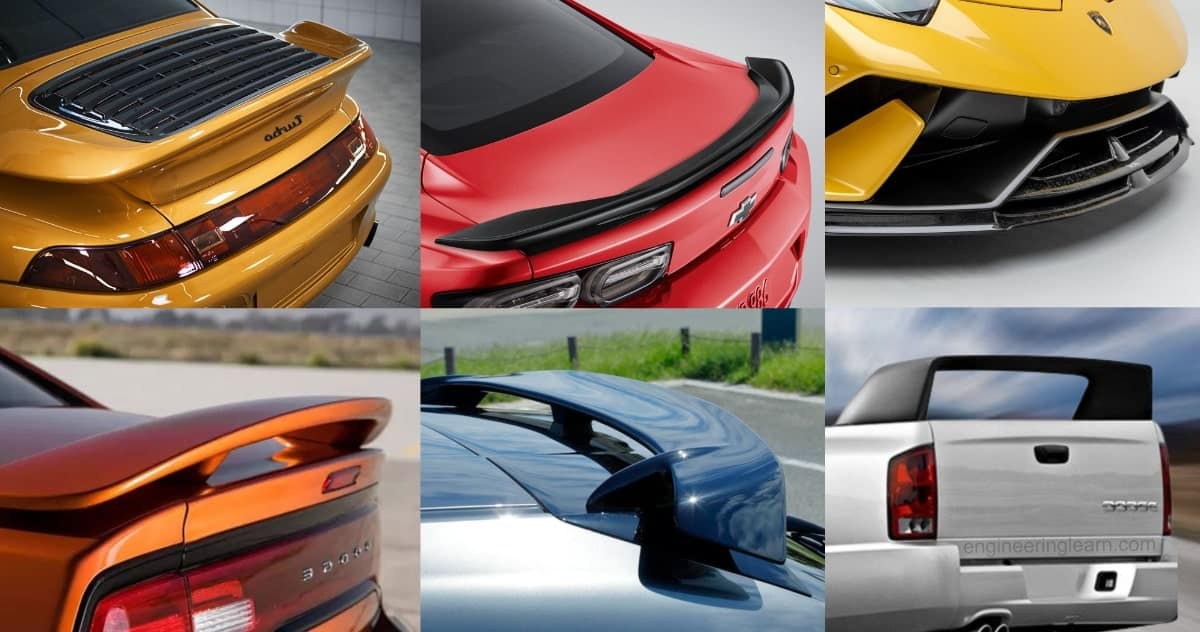What Is A Spoiler For A Car

Alright, let's dive into the world of automotive spoilers. You see them everywhere – from sleek sports cars to even some SUVs. But what exactly is a spoiler, and what does it do? This article aims to provide a comprehensive understanding of spoilers, targeting the intermediate car owner and DIY enthusiast. We'll cover the key aspects, from their fundamental purpose to troubleshooting common issues. We'll also discuss safety concerns, ensuring you can work on your vehicle responsibly.
Purpose of Spoilers
The primary purpose of a spoiler is to spoil unfavorable air movement across a vehicle's body in motion, usually described as turbulence or lift. At higher speeds, the flow of air over a car can generate lift, similar to an airplane wing. This lift reduces the effective weight on the tires, decreasing traction and potentially impacting handling. Spoilers aim to counteract this effect by modifying the airflow.
Specifically, a spoiler works by disrupting the smooth airflow at the rear of the vehicle. It creates a region of higher pressure behind the car, reducing lift and, in some cases, even creating downforce. Downforce, in contrast to lift, pushes the car down onto the road, improving grip, especially during cornering and at high speeds. While spoilers don't always create net downforce, they help reduce lift, which is beneficial.
Key Specs and Main Parts
A typical spoiler assembly consists of several key parts:
- Spoiler Blade/Wing: This is the main aerodynamic surface that interacts with the airflow. Its shape and angle are crucial for performance.
- Mounting Brackets: These secure the spoiler to the vehicle's body. Their design is critical for stability and load distribution.
- End Plates (Optional): Some spoilers feature end plates to further channel the airflow and minimize drag-inducing vortices at the wing tips.
- Adjustable Elements (Optional): High-performance spoilers may include adjustable elements like Gurney flaps or adjustable wing angles to fine-tune the aerodynamic performance.
Key Specifications to consider include:
- Chord Length: The distance from the leading edge to the trailing edge of the spoiler blade.
- Span: The total width of the spoiler blade.
- Angle of Attack: The angle between the spoiler blade and the oncoming airflow.
- Material: Spoilers are commonly made from fiberglass, carbon fiber, polyurethane, or ABS plastic. Each material offers different properties in terms of weight, strength, and cost.
How It Works
As a car moves through the air, it creates a pressure differential. Air flowing over the top of the car has to travel a longer distance than air flowing underneath, resulting in lower pressure above the car and higher pressure below. This pressure difference generates lift.
The spoiler disrupts this airflow. By creating a region of turbulent, lower-energy air behind the vehicle, it reduces the pressure difference and minimizes lift. Some spoilers, particularly those with a pronounced angle of attack, can even create a net downward force. The effectiveness of a spoiler is heavily dependent on its shape, size, and angle, as well as the overall design of the vehicle.
Consider a race car spoiler: The angle of attack is very aggressive, which produces a lot of downforce for cornering. However, this also increases drag. On a street car, the angle of attack is usually much less aggressive to strike a balance between reducing lift and minimizing drag, which is important for fuel economy.
Real-World Use – Basic Troubleshooting Tips
Here are some common issues you might encounter with a spoiler, along with basic troubleshooting tips:
- Spoiler Vibrations/Looseness: Check the mounting brackets and fasteners. Tighten any loose bolts or screws. If the brackets are damaged, they will need to be replaced.
- Paint Damage/Cracking: Spoilers, especially those made from fiberglass, can be susceptible to cracking and paint damage from UV exposure or impacts. Repair any cracks promptly to prevent further damage. Re-painting may be required.
- Reduced Fuel Economy (Aftermarket Spoilers): If you notice a significant drop in fuel economy after installing an aftermarket spoiler, it may be generating excessive drag. Consider adjusting the spoiler's angle (if adjustable) or potentially replacing it with a more efficient design.
Safety – Highlight Risky Components
Working with spoilers generally doesn't involve high-voltage electrical systems or pressurized fluids, but there are still some safety considerations:
- Sharp Edges: Some spoilers may have sharp edges or corners. Wear gloves to protect your hands from cuts.
- Working at Heights: Installing a spoiler often requires working at the rear of the vehicle, possibly on a ladder or step stool. Ensure you have a stable and secure platform.
- Drilling/Cutting: If you need to drill holes in the vehicle's body to mount the spoiler, wear safety glasses to protect your eyes from flying debris. Be mindful of what is behind the panel you are drilling into to avoid damaging wires or other components.
- Structural Integrity: When installing aftermarket spoilers, ensure the mounting points on the vehicle are structurally sound. Weak or corroded mounting points can lead to the spoiler detaching at high speeds, creating a serious hazard.
- Torque Specifications: Always adhere to the recommended torque specifications when tightening fasteners. Over-tightening can damage the spoiler or the vehicle's body.
Spoiler Diagram and File Access
While we don't have an interactive diagram within this article, we've prepared a detailed PDF diagram illustrating the different types of spoilers, their components, and mounting instructions. This diagram includes:
- Cross-sectional views of various spoiler designs.
- Detailed exploded views of mounting hardware.
- Torque specifications for common fasteners.
- Diagrams illustrating airflow patterns around different spoiler types.
We have the file available for download. This resource will be invaluable for repairs, modifications, or simply gaining a deeper understanding of how spoilers work. The diagram also contains color coded vacuum lines of different parts. Remember to always prioritize safety when working on your vehicle. A solid understanding of the principles involved is the first step towards a successful and safe modification or repair.
